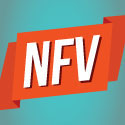Pan-European operator backs OpenStack and says virtualization will broaden the range of services it can offer customers.

Sweden's Tele2 has become the latest European operator to announce firm plans for NFV rollout as it begins preparing for the launch of 5G services in the next few years.
The pan-European operator, which maintains networks across nine countries in the region, says the NFV deployment will allow it to offer a broader range of services to customers across all segments, including business, consumer and the Internet of Things (IoT).
Tele2 AB (Nasdaq: TLTO) expects to introduce its first live virtualized application -- an evolved packet core -- by the third quarter of this year and has named several vendors working on its NFV rollout.
China's Huawei Technologies Co. Ltd. is to provide rack mount servers, while Cisco Systems Inc. (Nasdaq: CSCO) will be the leading network vendor.
Tele2 has also revealed it will base the NFV rollout on OpenStack technology, which UK-headquartered Canonical Ltd. will provide and manage. Juju, Canonical's generic VNF (virtual network functions) manager, will be used to onboard new services.
The news will be welcomed by the OpenStack community after fresh criticism of the open standard by the UK's BT Group plc (NYSE: BT; London: BTA). During a presentation at the recent MPLS/SDN/NFV World Congress in Paris, Peter Willis, BT's chief researcher of data networks, said developers still needed to address key technical challenges before OpenStack could be used to support a rollout of virtual enterprise CPEs. (See BT Says OpenStack Still Not Up to Spec.)
Other service providers, however, have recently warmed to OpenStack, including Saudi Telecom Co. (STC) , which has now taken a strategic decision to base all new virtual network functions it introduces on OpenStack technology. (See Saudi Telecom Pins NFV Future on OpenStack.)
In a conversation with Light Reading, Saleh Mosaibah, STC's vice president of cloud services, said OpenStack had matured and become more "robust" in the last two years.
Tele2 has also indicated its entire data center network will be built using a so-called spine/leaf architecture.
A modern alternative to more traditional, hierarchical systems, a spine/leaf architecture should help to reduce latency and get rid of bottlenecks.
Tele2 is among several operators that have now emphasized the importance of NFV technology to future 5G services. "The 5G standard will be ready by 2020 and in the field one or two years later," said Niklas Sonkin, Tele2's chief operating officer, in a company statement. "Cloud and virtualization are important building blocks in the foundation of 5G technology."
For more NFV-related coverage and insights, check out our dedicated NFV content channel here on Light Reading.
During the recent Mobile World Congress in Barcelona, Telia Company , the Swedish incumbent, told Light Reading that NFV will be as critical to 5G as a new radio interface, allowing it to provide a variety of different network services on the same infrastructure through a technique called network slicing. (See NFV Key to 5G Business Case, Says TeliaSonera.)
US giant AT&T Inc. (NYSE: T), meanwhile, is looking to virtualize its mobile core and then move this closer to the network edge so that it can support 5G and IoT services more cost-effectively. (See AT&T: Virtualized Mobile Core Key to 5G.)
The details of Tele2's announcement suggest it may have similar ambitions. Light Reading is awaiting responses to questions on this and other aspects of the NFV strategy.
Because it has a presence in a number of neighboring European markets, Tele2 might also see a bigger opportunity than other service providers to realize cost savings from investing in NFV.
Deutsche Telekom AG (NYSE: DT), another pan-European player, has put NFV at the heart of its pan-net strategy. By migrating to all-IP systems that will support New IP technologies like SDN and NFV, the German operator hopes to reduce the number of service platforms it maintains across Europe from 650 to just 50. That should enable it to reduce costs and deploy new services more efficiently. (See DT Plots Pan-Net, 'Answers' B2B OTT Threat.)
Other European incumbents, such as France's Orange (NYSE: FTE), have recently played down the cost-saving attractions of NFV, preferring to focus attention on the service-related benefits of the technology. (See Orange Sours on Cost Benefits of NFV.)
Besides Sweden, Tele2 operates in Austria, Croatia, Estonia, Germany, Kazakhstan, Latvia, Lithuania and the Netherlands.
Last year, the operator reported net sales of around 26.9 billion Swedish kronor ($3.26 billion), 3.5% more than in 2014, but its EBITDA fell by 2.9% to around SEK5.8 billion ($702 million).
— Iain Morris, 

 , News Editor, Light Reading
, News Editor, Light Reading
Read more about:
EuropeAbout the Author(s)
You May Also Like





.jpeg?width=300&auto=webp&quality=80&disable=upscale)





